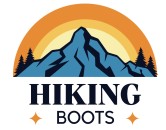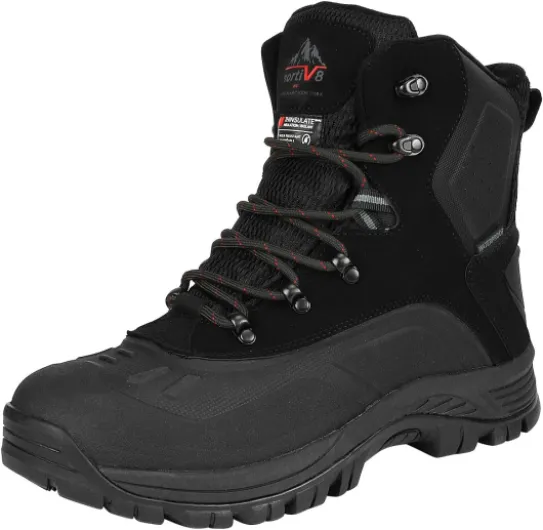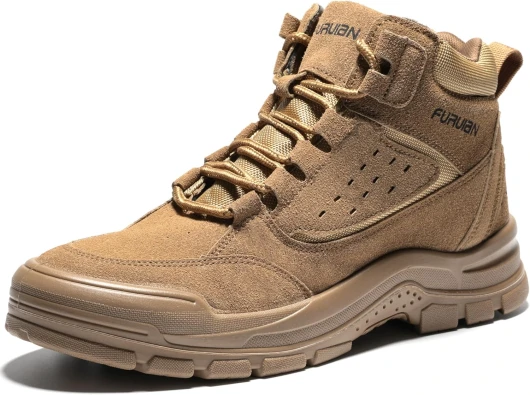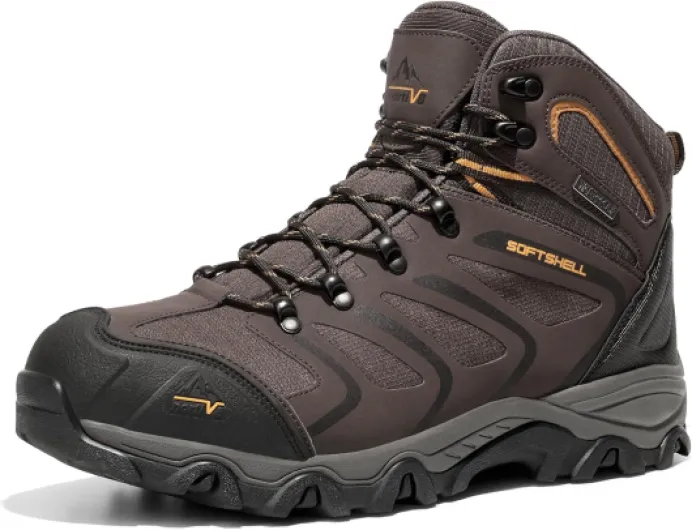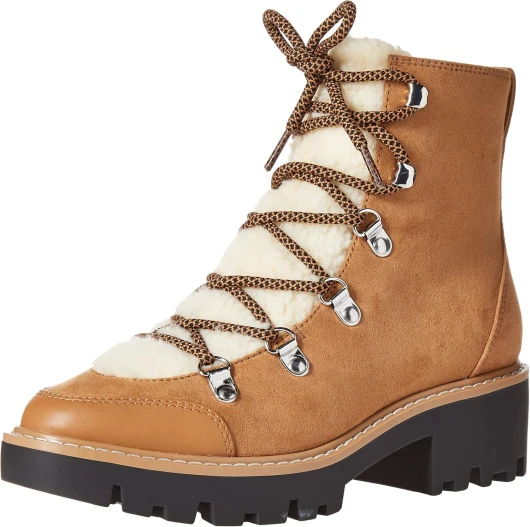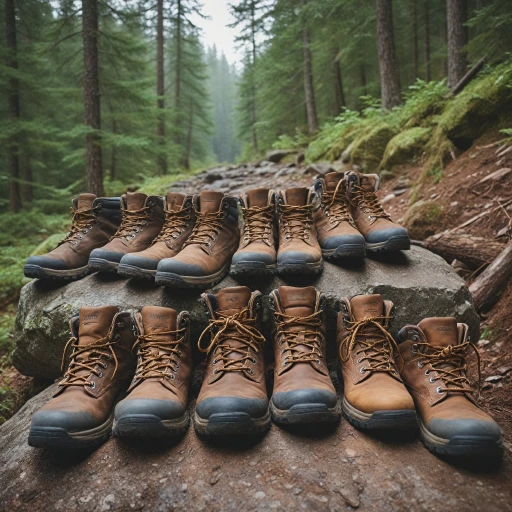
Understanding the Design of Hiking Boots
Examining the Anatomy of Hiking Boots
When it comes to hiking boots, understanding their design is crucial for both outdoor enthusiasts and those considering them for work purposes. Built to withstand the rigors of the trail, these boots are crafted with specific features that set them apart from traditional work boots. Firstly, hiking boots often come equipped with features like waterproof materials and enhanced traction. This construction aims to provide optimal performance in varying weather conditions and terrains, ensuring that your feet remain dry and firmly planted. Whether you're hiking through a stream or trekking on a muddy path, these waterproof hiking boots will have you covered. Traction is another key element in the design of hiking boots. The soles are typically constructed from durable materials with aggressive tread patterns. This ensures a slip resistant experience, ideal for rocky or wet surfaces—conditions similarly encountered in various work environments. Protection is at the forefront as well, with many hiking boots offering composite toe or steel toe options. This essential guard shields the toes from potential impacts, serving as a protective measure whether on a challenging hike or in demanding work settings. Finally, the upper part of the hiking boot is designed for support and comfort. Depending on the model, this can include everything from padded collars to adjustable boot buckles. The importance of boot buckles cannot be overstated—they ensure a secure fit that adapts to foot movements, crucial for both long hikes and extended work periods. Clearly, the frameworks of hiking boots are developed with specific purposes in mind, yet they possess inherent attributes that may lend themselves effectively to work environments.Comparing Hiking Boots to Traditional Work Boots
Examining Differences in Functionality and Features
When considering whether hiking boots can substitute work boots, it’s crucial to examine their key attributes. While both types of boots are crafted for durability and support, their designs cater to distinct activities. Hiking boots focus on navigating challenging terrains, prioritizing lightweight yet robust materials for agile movements. Features like waterproof membranes keep feet dry under wet conditions, making them suitable for all-weather expeditions.
Traditionally, work boots are structured for protection in industrial settings. With components like composite toe or steel toe, these boots offer superior defense against heavy or sharp objects. Unlike lightweight hiking designs, work boots are bulkier, enhancing support and slip resistance in hazardous conditions.
Hiking boots, with their advanced traction soles, ensure better grip on uneven surfaces, thanks to their intricate lug patterns. However, while hiking boots offer essential protection, work boots are engineered with more specific safety certifications, often meeting industry safety standards for resistance and protection.
The flexibility intrinsic to a good pair of hiking boots translates to suitability across various environments. Yet, it is essential to consider whether the softer toe construction of some hiking boot models suffices for workplace demands. Choosing the appropriate footwear hinges on understanding these differences, alongside your personal requirements and environment.
Further details on boot components can be found in our guide discussing the importance of boot buckles, offering essential insights into how specific features impact overall boot functionality.
Benefits of Using Hiking Boots as Work Boots
Advantages of Choosing Hiking Boots for Work Duties
When it comes to selecting suitable footwear for the daily grind, some might wonder why hiking boots could serve as a solid alternative to traditional work boots. Hiking boots, often designed with enduring materials and crafted with precision, offer a handful of benefits when transitioning from nature trails to structured work environments. Firstly, their waterproof features make them optimal for outdoor tasks and indoor environments prone to moisture. Whether you're tackling a wet construction site or simply navigating through puddles on your daily commute, waterproof hiking boots will keep your feet dry and comfortable. Additionally, hiking boots equipped with a composite toe or even a steel toe provide the necessary protection often required in a work setting. These features are crucial in high-risk conditions where toe protection is of utmost importance. The use of composite materials also ensures a lightweight advantage over the traditionally heavier steel toe options, which can lead to better mobility and less fatigue throughout the day. Another standout feature of hiking boots is their superior traction. With slip-resistant soles, these boots are designed to manage a variety of terrains, providing stability and reducing the likelihood of accidents when moving across slick or uneven surfaces. This characteristic is invaluable in environments that are predictably unpredictable underfoot. Moreover, the versatile design of hiking boots ensures comfort for extended periods, similar to work boots that need to endure long hours on the clock. These boots often come with cushioned insoles and padded collars, which enhance the overall comfort—an attribute greatly appreciated by those who spend their days on the move. For more fashion-oriented considerations, donning a pair of cargo hiking pants can complete the rugged yet professional look. Of course, blending expertise in hiking with workplace tasks through the use of hiking boots presents a unified approach to comfort, safety, and durability. The properties that make hiking boots suitable for nature hikes inherently lend themselves to diverse work challenges, making them a practical choice for those seeking functional and adaptable footwear.Potential Drawbacks and Considerations
Evaluating Potential Limitations and Key Considerations
When it comes to examining the versatility of hiking boots as work boots, it is essential to acknowledge potential drawbacks and considerations to make an informed decision. While hiking boots offer numerous advantages, as outlined in the benefits discussion, there are specific factors that might limit their suitability in work environments. Firstly, while many hiking boots are designed to provide excellent traction and waterproof qualities, there are conditions where they might not perform as well as traditional work boots. For instance, some work environments may require steel toe protection or other specific safety features that are not always present in hiking boots. Though certain hiking boots are equipped with a composite toe, not all models offer the necessary protection standards found in steel toe work boots. Moreover, the durability of hiking boots can become a concern. Work boots are often crafted to withstand continuous wear and harsh conditions typical in some work settings. While hiking boots are sturdy, their construction might not always meet the rigor required for extended periods of heavy-duty tasks. There is a possibility that prolonged wear in such environments could lead to faster deterioration compared to specialized work boots. Another consideration is the style and appearance of hiking boots. Certain jobs may have specific dress codes, and while black or neutral-colored boots often seamlessly integrate into most attire, the more rugged design of hiking boots might not be suitable for formal or indoor office settings. It’s also important to keep in mind the varying degrees of slip resistance offered by different boots. While some hiking boots feature slip-resistant soles, the demands of a particular job might require additional traction beyond what's traditionally available in hiking footwear. Lastly, evaluating the fit and comfort under different working conditions is crucial. Though hiking boots are designed for long walks and hikes, the fit might differ when used for standing or working on hard surfaces for prolonged periods. A pair of boots designed specifically for work conditions might offer better support and comfort during these activities. For those considering the switch to using hiking boots as work boots, it's essential to carefully balance these considerations with the intended benefits to ensure practicality and safety in your work environment.Choosing the Right Hiking Boots for Work
Key Aspects to Consider for Versatile Hiking Boots
When selecting a pair of hiking boots that can double as work boots, multiple factors come into play to ensure they meet the demands of both hiking and your workplace effectively.Material and Protection: The material composition of hiking boots significantly influences their functionality. Look for waterproof options to keep your feet dry in wet conditions. Additionally, prioritize boots with steel or composite toe for added protection against heavy objects—this is a crucial feature when considering them for work environments.
Traction and Durability: When you're hiking, your boots need to handle various terrains. A work environment might also present similar challenges. Opt for boots with slip-resistant outsoles, providing excellent traction whether you're on rocky trails or slick industrial floors.
Comfort and Fit: Comfort is paramount for long hikes and lengthy work shifts. Boots designed with cushioned insoles and breathable materials can help reduce fatigue. Ensure they offer a snug fit without pinching or causing blisters.
- Color Options: While the color may seem less critical, options like black can be both versatile and appropriate for work settings.
- Waterproof Feature: If you encounter rain or snow in your work conditions, waterproof hiking boots will be advantageous.
- Weight and Flexibility: A lighter pair will be better suited for all-day wear, especially if your work involves constant movement.
- Additional Considerations: Look into specific workplace or hike requirements, such as electrical hazard protection or insulation, and select accordingly.
Choosing the right hiking boots for work doesn't have to be overwhelming. Assess your specific needs—whether it's protection from environmental elements or additional comfort for long hours—and prioritize accordingly to find the ideal pair.
Real-Life Experiences and Testimonials
Stories From the Field: Mixing Hiking Boots and Work
The experience of using hiking boots as work boots offers valuable insight into their adaptability under various conditions. Many workers have turned to hiking boots not just for their outdoor excursions but as a viable option for their demanding jobs, where a blend of comfort and protection is crucial.
One anecdote that circulates within labor-intensive industries is about individuals switching to waterproof hiking boots when traditional work boots failed to offer sufficient comfort during long hours. The lightweight nature of hiking boots, along with their breathability, was often praised, especially when combined with features like a steel toe or composite toe for added protection.
Moreover, the traction offered by hiking boots has been a significant point of satisfaction for workers on slippery or uneven surfaces. The slip resistant soles can provide a safer working environment, where conventional soft toe work boots might falter. A well-fitted pair of hiking work boots is reported to significantly reduce fatigue compared to heavier, traditional designs.
However, not all feedback is glowing. Some users mention that, while hiking boots excel in comfort and traction, they sometimes struggle with the rigorous demands of heavy-duty jobs. In terms of durability, traditional work boots still remain a top contender, especially in sites where extreme conditions are the norm.
In conclusion, versatile as they may be, one must carefully evaluate their specific work environment and needs before permanently opting for hiking boots as their everyday work shoe.
